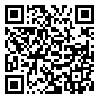Volume 25, Issue 97 (7-2025)
refahj 2025, 25(97): 9-43 |
Back to browse issues page
Download citation:
BibTeX | RIS | EndNote | Medlars | ProCite | Reference Manager | RefWorks
Send citation to:



BibTeX | RIS | EndNote | Medlars | ProCite | Reference Manager | RefWorks
Send citation to:
Rezvani S, Khaniki H, Zardar Z. (2025). Framing of COVID-19 Pandemic Infographics by the World Health Organization, Iran’s Ministry of Health, and IRNA News Agency. refahj. 25(97), : 1 doi:10.32598/refahj.25.97.838.2
URL: http://refahj.uswr.ac.ir/article-1-4377-en.html
URL: http://refahj.uswr.ac.ir/article-1-4377-en.html
Abstract: (1477 Views)
Introduction: Following the outbreak of COVID-19, various institutions responsible for pandemic response disseminated critical information about the coronavirus. Different media outlets emphasized particular aspects of the crisis, thereby shaping public perception through selective framing. This research aims to analyze the framing strategies employed in COVID-19 infographics produced by three key organizations: the World Health Organization (WHO) as the primary international authority on pandemic response; Iran’s Ministry of Health, Treatment, and Medical Education as the national coordinating body; and the Islamic Republic News Agency (IRNA) as Iran’s official state media outlet.
Method: In this study, all infographics produced by the three mentioned institutions were extracted. Then, based on purposeful non-random sampling using the thematic analysis method, 190 infographics were coded.
Findings: The results revealed significant differences in framing approaches between national and international institutions. While domestic institutions predominantly emphasized the physical health dimensions of COVID-19, they largely overlooked broader pandemic-related risks. In contrast, the World Health Organization (WHO) adopted a more comprehensive framing strategy that addressed multiple dimensions, including: mental health impacts, social health consequences, prevention of stigma and discrimination, increased domestic violence during lockdowns, and recognition of healthcare workers as “health heroes.”
Discussion: A comparative analysis of COVID-19 infographics reveals distinct framing approaches between the World Health Organization (WHO) and Iran’s national institutions (Ministry of Health and IRNA). While WHO adopted a multidimensional perspective addressing various pandemic aspects, the Iranian institutions maintained a predominantly one-dimensional health-focused approach. This narrow framing, which largely overlooked the crisis’ social, psychological, and economic dimensions, failed to meet audiences’ comprehensive information needs. Such limited representation could ultimately undermine these institutions’ credibility as trusted information sources during future public health emergencies.
Method: In this study, all infographics produced by the three mentioned institutions were extracted. Then, based on purposeful non-random sampling using the thematic analysis method, 190 infographics were coded.
Findings: The results revealed significant differences in framing approaches between national and international institutions. While domestic institutions predominantly emphasized the physical health dimensions of COVID-19, they largely overlooked broader pandemic-related risks. In contrast, the World Health Organization (WHO) adopted a more comprehensive framing strategy that addressed multiple dimensions, including: mental health impacts, social health consequences, prevention of stigma and discrimination, increased domestic violence during lockdowns, and recognition of healthcare workers as “health heroes.”
Discussion: A comparative analysis of COVID-19 infographics reveals distinct framing approaches between the World Health Organization (WHO) and Iran’s national institutions (Ministry of Health and IRNA). While WHO adopted a multidimensional perspective addressing various pandemic aspects, the Iranian institutions maintained a predominantly one-dimensional health-focused approach. This narrow framing, which largely overlooked the crisis’ social, psychological, and economic dimensions, failed to meet audiences’ comprehensive information needs. Such limited representation could ultimately undermine these institutions’ credibility as trusted information sources during future public health emergencies.
Article number: 1
Type of Study: orginal |
Received: 2024/08/6 | Accepted: 2025/03/12 | Published: 2025/07/6
Received: 2024/08/6 | Accepted: 2025/03/12 | Published: 2025/07/6
Send email to the article author
| Rights and permissions | |
 |
This work is licensed under a Creative Commons Attribution-NonCommercial 4.0 International License. |








